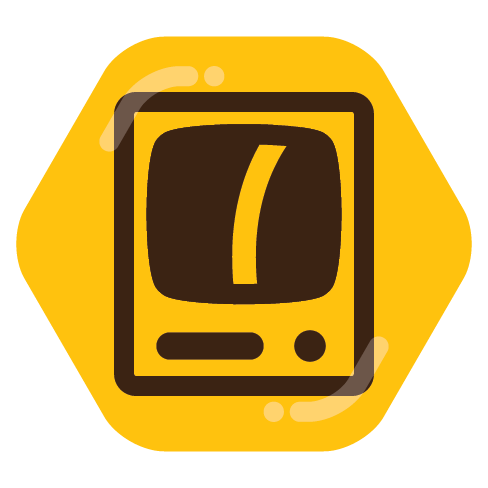Ive tried linux before mainly manjaro and endevouros and recently mint i havent really stuck to them however and gone back to windows but im willing to give linux another shot
Debian-specific advice
Debian is a stable distro, so software versions will remain pretty much the same over the life cycle. This is good if stability (software not changing out from under you) is desired, but if you want to take advantage of new features as they are added to whatever software you’re running, it’s less beneficial. So, if you’re going to run debian as a desktop os, I would recommend
switching your apt sources to point to the unstable branch: sidswitching your apt sources to point to testing (see below).You’ll probably see a lot of older tutorials and stackoverflow posts that use
apt-get, which predatesapt, instead ofaptas the package manager.aptis the recommended frontend;apt-getwill work, butaptwill have a nicer user experience.Also, on the topic of
apt, there are three ways to run updates that you’ll probably see online; this stackexchange post provides a pretty good explanation of the differences between them.General linux advice that I think is worth sharing
Man pages are pretty helpful once you know how to navigate them. Some tips regarding that:
- You mentioned that you tried manjaro, so I think you probably already know what
manis, but just in case:manis the command that you use to pull up manual pages for basically everything. - You can search through the man database for a keyword with the
aproposorman -kcommands. For example,apropos videopulls up a list of all the man pages that have the word video in their names or descriptions. - You might notice when running the above command that there are numbers in parentheses after the manual names. This is because the manuals are broken out into 9 sections based on the types of pages they contain. You can put the section number before the name to specify which section to pull up the manual from. So, if you had two manuals named
fooin sections 1 and 3, to pull up the one for section 3 you would use the command:man 3 foo. If you want to read more,manhas it’s own manual page, which you can pull up withman man. - You can search for text in
manwith/and?./performs a forward search and?performs a backwards search. You can jump forward to the next result in the search withnor back to the previous result withp. - The bottom of man pages will have a ‘see also’ section, which lists related commands. Some man pages will also have an examples section.
Another good place to look for documentation is the arch wiki. A lot of the information on there translates to other distros fairly well, and it’s got huge amounts of well written information. If you use duckduckgo, the bang for it is !aw.
The shell is pretty intimidating for a lot of new users. While it’s not strictly necessary for most things, I do think that you’ll have a smoother linux experience if you become at least a little bit comfortable using it. Here is a bash guide aimed at beginners.
Finishing Thoughts
Looking back at what I’ve written, I realize that I have dumped a lot of information on you. So I think the best piece of advice that I can offer is this: Becoming comfortable with linux (or any new operating system) takes time and can feel overwhelming. Don’t feel pressured to understand everything immediately and don’t be afraid to go slow; Rome wasn’t built in a day.
I’ve been running linux as a daily driver for 6 or 7 years now, and I run debian on my servers, so if you have any questions now or in the future, I am happy to try to answer them.
I would recommend switching your apt sources to point to the unstable branch: sid.
Strongly disagree with this. Most users should use Debian stable, or if you needs new versions of specific software, then maybe testing or backports.
Unstable is intented for Debian maintainers, and people who do QC and debug Debian. Unstable means more frequent bugs and breakages, which only makes sense if you’re working on detecting bugs and fixing them before new packages arrive in testing/stable.
Using unstable without being an advanced Debian users is asking for trouble, because you risk more frequent breakages that requires manual intervention and in-depth Debian/Linux knowledge to fix thing. Veteran Linux users may be comfortable with this, but it’s the wrong choice for most new users.
Good point. Testing would probably be a better choice; I’ll edit the parent comment to reflect that
Thanks
As someone who’s mained Debian for last year or two, this is all solid information 👍
Thanks for the detailed explanation i accually didnt know about the man command makes sense though As for apt and apt-upgrade i didnt accually know apt-upgrade existed but that is good to know as for the shell im not that intimidated by it ive used command prompt plenty of times in windows and when trying other different distros one question i remember getting nvidia drivers installed being somewhat dificult on linux is this still the case or has something changed?
I think it largely depends on the distro. There are two nvidia drivers: the official one which generally works better and nouveau, which is open source.
The instructions from the Debian wiki seem to be pretty thorough. Barring any driver issues, it should just be editing one file to add non-foss repos and installing the drivers through the package manager.
- You mentioned that you tried manjaro, so I think you probably already know what
So Debian (broadly) has three main versions. Stable, Testing, and Unstable (sid). Since you are waiting for a stable release, I’m assuming that’s where you’ll stay.
The one thing to know is that you are entering a very different kind of Linux environment than Mint and Manjaro. When Debian means stable, they mean it. It is rock steady…but it also means you’ll be outdated when it comes to features. The only updates you will get are going to be stability and security based. And that’s for the life of that OS version. So if you desperately need to update something for a new feature, you’ll need to learn backports.
Honestly, I love it (apart from on my gaming rig). It’s the OS I install on people’s machines that just want a no fuss, easy to use OS, that won’t crash or glitch out.
Well, I know it’s not answering your question but what brought you back to windows before? That’s probably more important than debians quirks.
Mainly familiarity to windows and discord not having audio for screensharing im probably not going to switch fully but i dont see the harm in having it on a separate drive on my machine to use
Since you’re migrating from Windows you’ll likely want to easily transfer data between Debian and Windows.
If you install both on the same machine, with dual boot, see the NTFS page to transfer files from Windows drives. If you use a separate machine, the easiest IMHO is using a Network Share to access Windows files.
If you intend to keep using both for a while, look into a sync solution rather than migration. See syncthing for instance.
This should help get started with the migration, access your documents. If you already use Firefox/Chrome, it should be possible to install the same browser and export+import profile/settings.
If you’re looking for specific software on Debian or have issues, ask about it to get more specific comments.
deleted by creator
Coming from Windows, I’m surprised you didn’t stick with Mint. If you want Debian, there’s a version of Mint that is Debian-based instead of being based on Ubuntu. Using that might save you a lot of grief trying to set everything up yourself.


